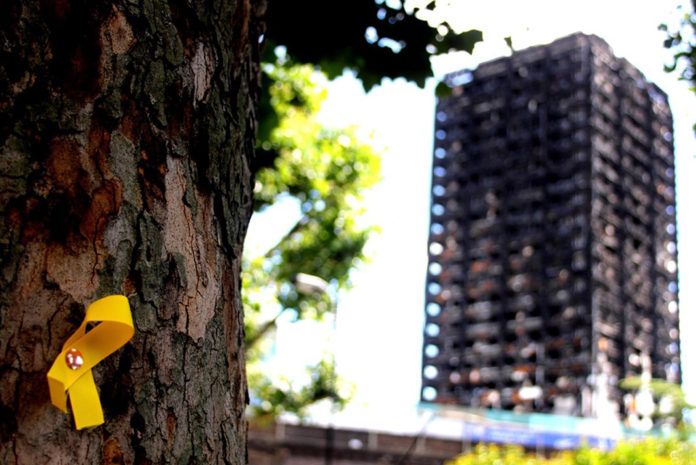In the two years since the Grenfell Tower fire, the government has been “far too slow” in reforming the building and fire safety regime and is still not doing enough to remove dangerous cladding from existing buildings. In a report published today, the Housing, Communities and Local Government Committee has called on the government to recognise the need for urgency.
Moral duty
The report warns that the £200 million that the government has set aside for the remediation of private sector residential buildings with ACM cladding will not be sufficient. The government has also failed to provide funding for other forms of potentially dangerous cladding materials currently found on hundreds more existing residential and high-risk buildings. Delay is no longer an option and the government must fulfil its moral duty to ensure buildings are safe by setting out a firm timescale for removal.
Greater urgency is also needed to establish an effective regulatory system that ensures building safety in the long-term. The Committee is frustrated that, over a year since the publication of the final report of the Independent Review of Building Regulations and Fire Safety, the government has only recently started consulting on its proposals for the new regulatory regime.
The Committee were also concerned to hear from survivors of the Grenfell Tower fire that, for many, the quality of their new permanent housing was very poor and that they had not received the health screening services they were told they would get.
Chair’s comments
Chair of the Housing, Communities and Local Government Committee, Clive Betts MP, said: “We are two years on from the Grenfell Tower disaster and the government is far behind where it should be in every aspect of its response.
“Further delay is simply not acceptable. The government cannot morally justify funding the replacement of one form of dangerous cladding, but not others. It should immediately extend its fund to cover the removal and replacement of any form of combustible cladding – as defined by the government’s combustible cladding ban – from any high-rise or high-risk building.
“Much more progress should also have been made on developing a comprehensive building and fire safety framework. This is simply not good enough. It has been over two years since the fire at Grenfell Tower, and more than a year since the publication of the Final Report of the Independent Review of Building Regulations and Fire Safety, and yet the government has only just published a consultation into its proposals for reform of the building safety regulatory system. The government must pick up the pace of reform, before it is too late.
“We would like to pay tribute to the victims and survivors of the Grenfell Tower fire, and thank them for giving evidence to our inquiry. We have a duty to learn the lessons of the failures that had such a devastating impact on so many lives. As of yet, the government has failed to do so.”
Key findings
Removal of dangerous cladding from residential buildings
- The ongoing delay to the removal and replacement of dangerous cladding from high-rise and high-risk building is unacceptable. The government must now set a realistic and short deadline for the removal of any form of dangerous cladding, supported by adequate funding and sanctions for building owners who fail to make their buildings safe within a reasonable timeframe.
- The £200 million fund to cover the cost for the removal of and replacement of unsafe ACM cladding is likely to fall far short of what will be needed to make all buildings safe.
- The government has a moral duty to ensure the removal of all forms of combustible cladding – as defined by the government’s combustible cladding ban – and must allocate a sufficient level of dedicated funding to guarantee this. Funding should also cover the full cost of remedial works.
Support for Grenfell survivors
- The support and services given to the survivors and relatives of victims of the Grenfell fire has not been good enough. The re-housing of former Grenfell residents was too slow and significant issues remain with much of the accommodation that has now been provided.
- Survivors have not been given sufficient health screening to identify the long-term health effects of the fire, particularly the inhalation of noxious chemicals. A comprehensive programme of health services must be provided, beyond what has been announced by the government.
- Action to understand the long-term environmental impact around the Grenfell site and potential soil contamination has only recently been initiated. Environmental checks are welcome but should have begun much sooner. Local residents had raised concerns but were not listened to for too long.
Regulation
- It is extremely disappointing that it has taken two years since the Grenfell Tower fire, and a year since the publication of the Hackitt Report, for the government to announce proposals for reform of the building safety regulatory system. Delay and prevarication creates an unacceptable risk of another devastating tragedy.
- A new regulatory regime must provide greater accountability, robust oversight and strong sanctions, whilst also giving greater clarity over building standards. Residents must know that they are safe, but building operators need better guidance on what materials are safe and what fire safety measures are necessary.
- The regulatory system should apply to all buildings housing vulnerable people and go beyond the existing boundary of buildings above 18 metres in height. The government should be ambitious in bringing buildings within the scope of the scheme at the earliest possible opportunity and set out clear timescales for when this will happen.
- The government is right to propose a new duty holder regime with individually-held responsibilities across the life-cycle of a building. It will be challenging to make these roles attractive to qualified individuals and the government must avoid any additional associated costs being passed on to leaseholders. The government should also clarify that it is the building owner who should always be ultimately accountable for building safety.




